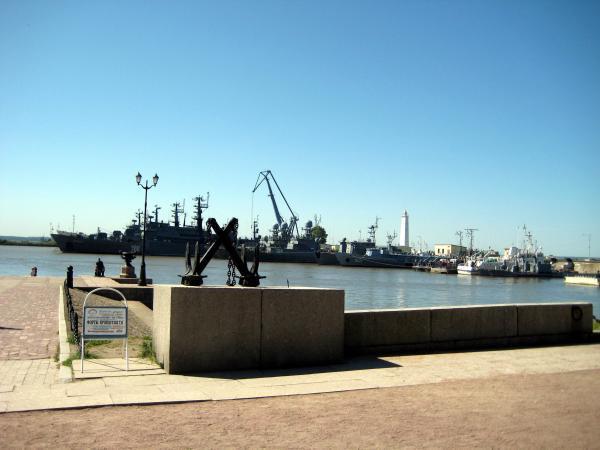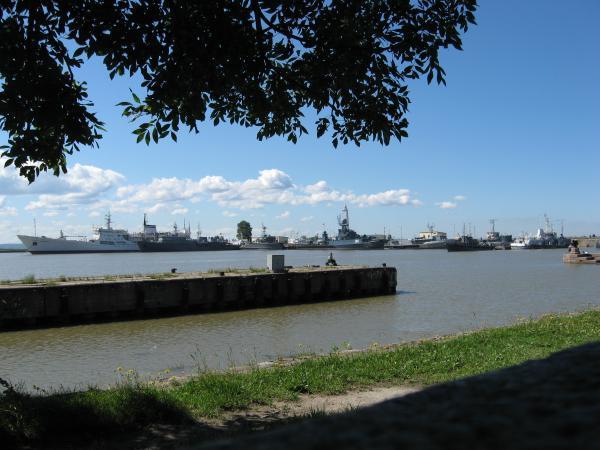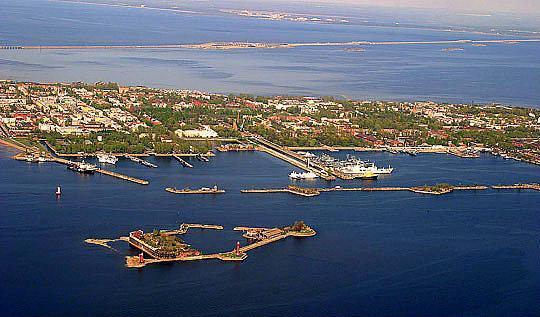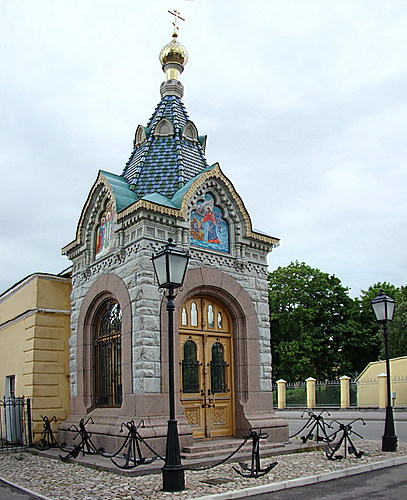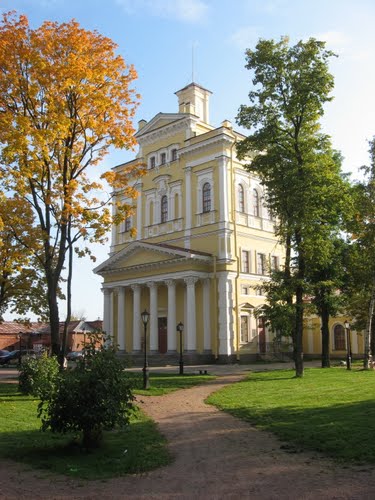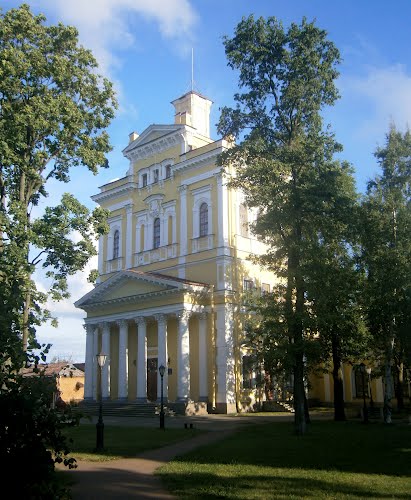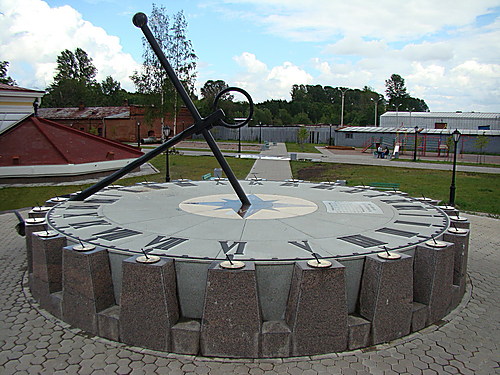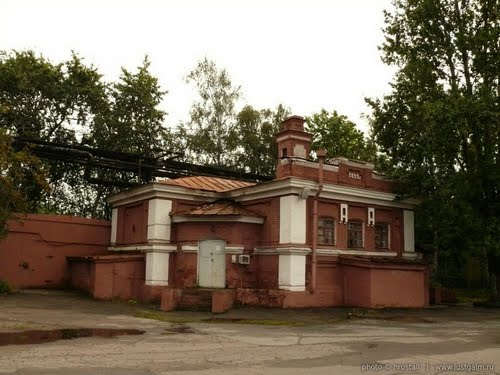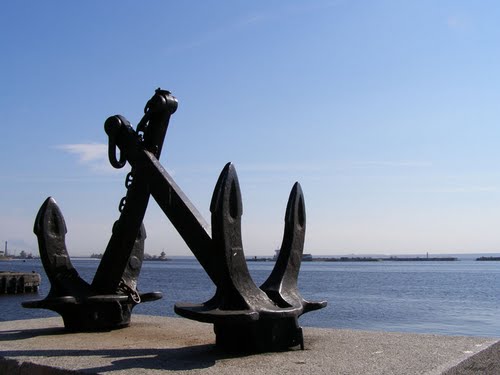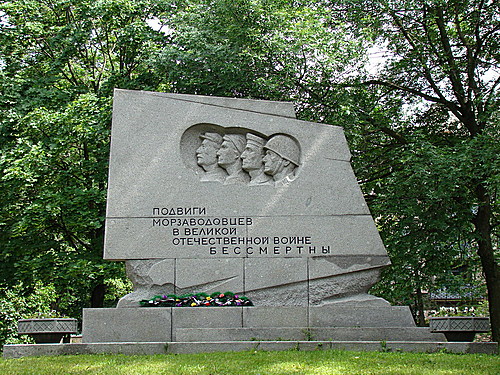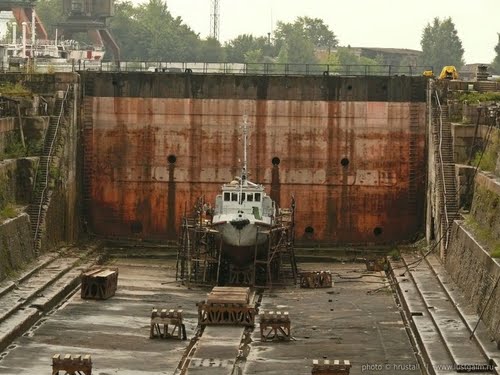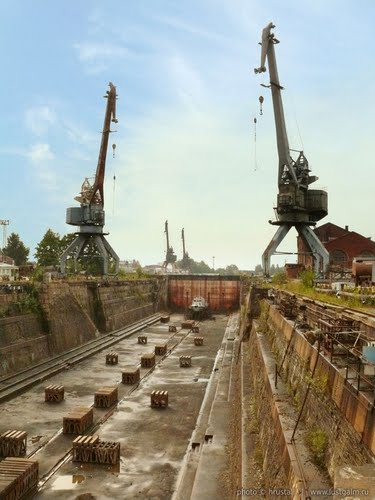Kronstadt is a municipal town in Kronshtadtsky District of the federal city of Saint Petersburg, Russia, located on Kotlin Island, 30 km west of Saint Petersburg proper near the head of the Gulf of Finland.
It is also Saint Petersburg's main seaport. In March 1921, it was the site of the Kronstadt rebellion.
Traditionally, the seat of the Russian admiralty and the base of the Russian Baltic Fleet were located in Kronstadt guarding the approaches to Saint Petersburg. The historic centre of the city and its fortifications are part of the World Heritage Site Saint Petersburg and Related Groups of Monuments.
Kronstadt has been a place of pilgrimage for Orthodox Christians for many years due to the holy memory of Saint John of Kronstadt.
History
Kronstadt was founded by Peter the Great, who took the island of Kotlin from the Swedes in 1703. The first fortifications were inaugurated on May 18, 1704.
These fortifications, known as Kronstadt's Forts, were constructed very quickly. During the winter the Gulf of Finland freezes completely. Workers used thousands of frames made of oak logs filled with stones. These were carried by horses across the frozen sea, and placed in cuttings made in the ice. Thus, several new small islands were created, and forts were erected on them, closing all access to Saint-Petersburg by the sea. Only two narrow navigable channels remained, and the strongest forts guarded them.
Kronstadt was thoroughly refortified in the 19th century. The old three-decker forts, five in number, which formerly constituted the principal defences of the place, and defied the Anglo-French fleets during the Crimean War, became of secondary importance. From the plans of Eduard Totleben a new fort, Constantine, and four batteries were constructed (1856–1871) to defend the principal approach, and seven batteries to cover the shallower northern channel. All these fortifications were low and thickly armored earthworks, powerfully armed with heavy Krupp guns in turrets. The town itself is surrounded with an enceinte.
In summer 1891, the French fleet was officially - and triumphantly - received in Kronstadt. It was a first step towards the coming Franco-Russian Alliance.
Russian Civil War
During the Petrograd riots of the February revolution, the sailors of Petrograd joined the revolution and executed their officers, thus gaining a reputation as dedicated revolutionaries. During the civil war, the sailors participated on the red side, until 1921, when they rebelled against the Bolshevik rule.
Kronstadt and the supporting forts and minefields were the key to the protection of Petrograd from foreign forces. Despite this, the cruiser Oleg was torpedoed and sunk by a small motor boat after participating in a bombardment of Krasnaya Gorka fort that had revolted against the Bolsheviks. This was followed on August 18, 1919, by a raid of seven Royal Navy Coastal Motor Boats into the harbor of Kronstadt itself, damaging the Soviet battleships Petropavlovsk and Andrei Pervozvanny, and sinking a submarine supply ship, the Pamiat Azova.
Kronstadt Rebellion
In 1921, a group of navy officers and sailors, soldiers as well as their civilian supporters rebelled against the Bolshevik government in Soviet Kronstadt. The garrison had previously been a centre of major support for the Bolsheviks, and throughout the Civil War of 1917–1921, the navy of Kronstadt had been at the vanguard of the main Bolshevik attacks. Their demands included "freedom of speech", a stop to the deportation to work camps, a change in Soviet war politics, and liberation of the soviets from "party control". After brief negotiations, Leon Trotsky responded by sending the army to Kronstadt, along with the Cheka. The uprising was thus suppressed.
World War II
In the late 1930s, Kronstadt lived the life of the fortified city and was the base of the Baltic Fleet. During that time Kronstadt was an important training center of the Soviet Navy. The Kronstadt Ship Repair Plant overhauled and repaired surface ships and submarines of the Baltic Fleet. All forts and batteries of the city were under reconstruction.
During World War II, Kronstadt was bombed several times by the Luftwaffe. In August 1941 the Luftwaffe began bombing Kronstadt regularly. The most notable bombing was Stuka ace Hans-Ulrich Rudel's sinking of the Soviet battleship Marat.
To prevent an enemy landing, 13 artillery batteries were established in Kronstadt and nine more batteries beyond the city, but on the island Kotlin. The main lookout was located in the Naval Cathedral. Visual range reached 45 km. The coastal defense of Kronstadt included two infantry regiments.
In late August, the Red Army in the Baltic States was in a critical situation. Tallinn, the main base of the fleet, was in danger and a decree to relocate the fleet from Tallinn to Kronstadt was given. By the time the Soviets had decided on a maritime evacuation of Tallinn, over 200 Soviet civilian and military vessels had been assembled in the harbor of Tallinn.
After the evacuation of Tallinn, the submarine subdivision had been organized in Kronstadt. By the end of 1941, 82 naval operations were made. Hitler was enraged, because Soviet submarines frequently disrupted military supplies of strategic materials from Sweden to Germany. The Germans tried to block completely the exit from the Gulf of Finland with antisubmarine nets and mines. Despite these efforts, the Soviet submariners continued to attack German ships. In 1942, 29 German vessels were sunk. Submarines cooperated with reconnaissance aircraft in searching for military targets.
But the Soviet submarines had broken through the mine barrages in the Gulf of Finland easily in 1942. To keep the Soviet submarine force away from the Baltic shipping stronger efforts were planned. The minefields would be larger and in addition a double submarine net would be laid from Porkkala to Naissaari, Operation "Walross". The blocking of the Gulf of Finland had been a 100% effective anti-submarine operation. But in 1944, when Finland was defeated and provided several bases to the Soviet Navy, the submarine warfare in the Baltic Sea reached a new and final stage.
The Baltic Fleet sent more than 125,000 people to serve ashore at the front. Eighty-three thousand people fought directly on the Leningrad Front. For the protection of Leningrad 10 brigades of marines, four regiments, and more than 40 separate battalions and companies were formed in Kronstadt.
The Luftwaffe and German artillery brought down thousands of bombs and shells to the Naval Plant and the Arsenal factory. The German air raids in September 1941, damaged the Baltic Fleet ships and infrastructure of the Plant. Several sections of the Plant were destroyed, the docks were showered with falling bombs, and dozens of workers and engineers were killed. Nevertheless, the plant continued its work. In the difficult conditions of the siege, the workers persevered with their work. Often the working day lasted for 18–20 hours.
It was thanks to the power of the Kronstadt Fortress that the destruction of Leningrad was successfully prevented. Kronstadt was conferred the status of "City of Military Glory" by the President of the Russian Federation Dmitriy Medvedev on April 27, 2009, for "courage, endurance and mass heroism, exhibited by defenders of the city in the struggle for the freedom and independence of the Motherland".

